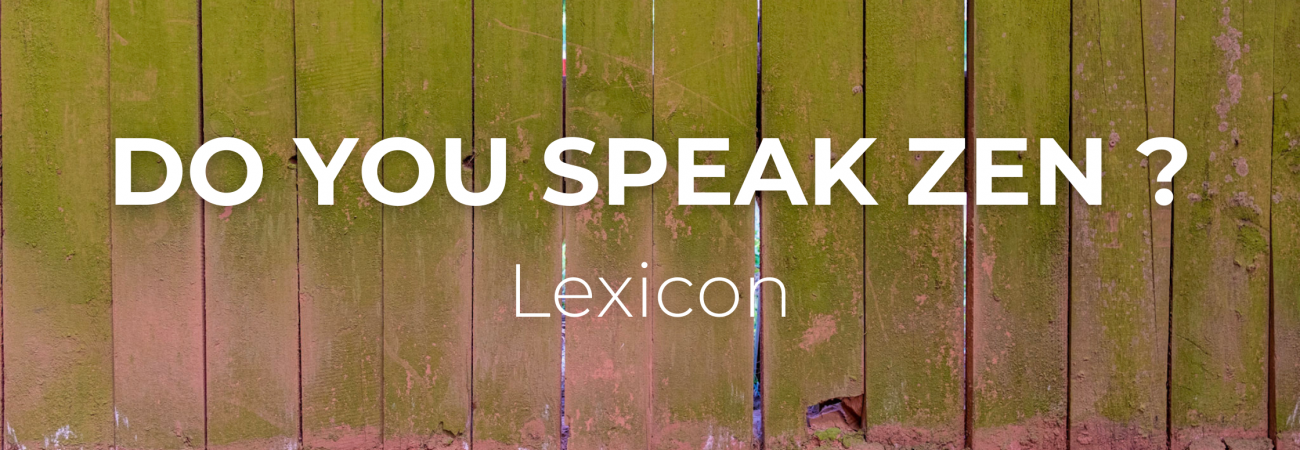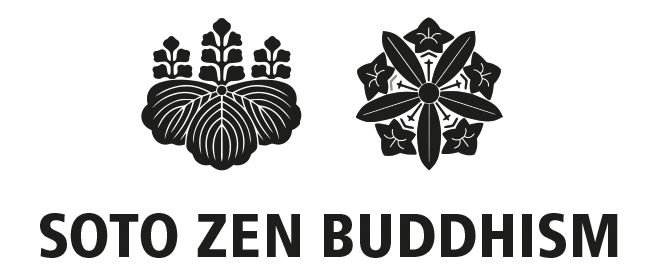
Do you speak zen? Lexicon
B
Bodhisattva : "awakened being". In Mahayana Buddhism, a bodhisattva is a being full of compassion who dedicates himself entirely to guideing others towards awakening. In the Zen tradition, the ordination of Bodhisattva consists in taking refuge in the Three Treasures and taking part in the ceremony during which the practitioner receives the Precepts. The Three Treasures are the Buddha, the Dharma and the Sangha.
D
Dharma : This word can have three meanings, according to the context.
The universal Law which all beings follow
The teaching given by Shakyamuni Buddha
With a lower-case d, this word indicates any phenomenon, whatever it may be
Dokusan : A face to face, private interview with the Master.
F
Fuse (danâ in sanscrit) : gift. Fuse is the fundamental practice of the monk. It is the first of the six paramitas.
G
Gaetan : a space in front of the entrance to the dojo, where it is possible to practise zazen in certain cases. In Strasbourg zen center, the gaitan is the part of the floor which is under the wood struck at the beginning of the session.
Gassho : greeting. To do gassho consists in joining hands and placing your fingertips at the level of your nose, the forearms parallel to the ground, and bowing from the waist as a sign of respect. In a Zen dojo, gassho indicates the beginning and the end of an action, thus expressing the attention we pay in doing it.
Gen-maï :vegetable and rice soup which the practitioners eat every morning following zazen, during a ritual meal.
Godo : the person in charge of the teaching in a dojo or a temple.
I
Ino : in a Zen temple, the person responsible for the conduct of the ceremonies. It is the Ino that initiates sutra chanting, with the other participants attuning to his intonation and rhythm.
K
Kusen : oral teaching given by a master during zazen.
Kin-hin : walking meditation in the dojo, usually in the middle of a zazen session. On each breath, you take a half-step and while breathing out, you let all the weight of the body pass through the front foot to the ground. The right hand is placed over the left fist in front of the solar plexus, the forearms being parallel to the ground.
Kyosaku : The “awakening staff”. During zazen, the practitioner can ask to receive the kyosaku. The Master then strikes a precise spot on the shoulder, which brings a feeling of relaxation and helps to carry on with the meditation in good conditions. It is in no way a brutal gesture or a punishment.
Kesa : A shawl that monks wear during zazen. The kesa is the Transmission garment of the true teaching since the Buddha. It is always of neutral earthy color. Traditionally, monks sew their kesa themselves.
Karma : This term literally means “action”. In Buddhism, it also indicates the beneficial or harmful “fruit” that an act will always produce. It can be the karma of the body, the karma of speaking or the karma of thinking. The karma thus points directly to the idea of responsibility. The practitioner can learn how to correct the course of karma thanks to the attention paid to each one of his or her actions.
Kito : Ritual of intercession to help a person in great physical or moral difficulty.
M
Mondo : Questions put to the Master after zazen, in the presence of the other practitioners.
O
Oryoki : Traditional bowls in which monks take all their meals. The opening and the closing of the oryoki are done according to a precise ritual.
P
Paramita : Virtuous practice. The six paramitas are: giving, practicing the precepts, patience, effort, concentration and wisdom.
R
Rakusu : Small kesa attached to straps made of fabric, that monks or ordained people wear around the neck on certain occasions.
S
Samu : All the tasks that have to be accomplished for the smooth running of the dojo and of the community.
Sangha : Community of the practitioners of Buddhism.
Sanpai : Prostrations. “San” means “three”, and “pai” the prostration itself. “Sanpai” expresses respect and major gratitude.
Sesshin : A period of sustained practice in a Zen temple.
Shashu : Position of the hands when one walks in a dojo. One places the left thumb in the left hand. The right hand is wrapped around the left hand. Both hands are placed at the base of the sternum, the palms of the hands directed towards the body. The forearms are horizontal, parallel to the ground.
Shusso : This term means “first monk”. The shusso is responsible for the atmosphere of meditation that should prevail in the dojo, in particular during zazen.
Sûtra : This word can have different meanings according to the context:
it initially indicates the texts that convey the words credited to Shakyamuni Buddha;
it can also indicate the fundamental texts of one of the great Traditions of Buddhism. In Zen, Sandokai by Maître Sekito or Fukanzazengi by Master Dôgen for example
it also refers to the chants used during ceremonies.
T
Tanto : This term means “master of the tans”, i.e. small platforms where the monks practice zazen in Japanese temples. In a dojo or a Zen temple, the tanto is responsible for the smooth running of all activities. He particularly sees to the unfolding of “the right spirit”. He can suggest changes to the shussos for the improvement of the atmosphere of the dojo or temple.
Teisho : Teaching given by the Master in connection with an important point of the teaching or practice.
Tenzo :Person in charge of the kitchen in a temple. He or she must take up their duty with a spirit of awakening and make of their work in the kitchen an occasion for their and other's enlightenment.
Z
Zafu : Meditation cushion.
Zafuton : Thick mat placed under the zafu.
Zazen : Sitting meditation. The posture of zazen is very precise. The legs are crossed, the back is straight, the shoulders and the stomach relaxed, the fingers of the left hand cover the fingers of the right hand, the thumbs are horizontal, the eyes half-closed, breathing is full and natural. All one’s attention goes to the posture and breathing. The mental activity calms down, without disappearing completely; one simply ceases feeding and identifying with it. Master Deshimaru used to say: “During zazen, we rediscover the normal conditions of the body and the spirit”.
Zen : Word derived from the Chinese “chan”, itself derived from the Sanskrit “dhyana”, which means “meditation”.


